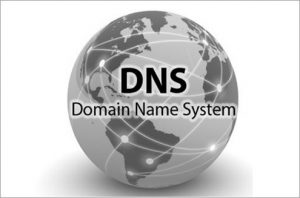DNS is Invented


Date: 01/01/1983
Before the DNS was invented in 1983
By the following November, 1983, the conceptand schedule were developed and published in The Domain Names Plan and Schedule,RFC 881, Domain Names — Concepts And Facilities, RFC 882, and DomainNames — Implementation And Specification, RFC 883. Some of the technical discussion involved indeveloping the DNS was carried out on the name droppers list. BIND. Because theDNS is such a fundamental part of the operation of the Internet network, the software that runs it must be nearly fault free, easily upgraded when a bug is found, and completely trusted by the Internet community — in other words, free open source software. The application that runs almost every DNS server on theInternet is called BIND, for Berkeley Internet Name Domain, first developed as a graduate student project at the University of California at Berkeley, and maintained through version 4.8.3 by the university’s Computer Systems Research Group (CSRG). The initial BIND development team consisted of Mark Painter,David Riggle, Douglas Terry, and Songnian Zhou. Later work was done by Ralph Campbell and Kevin Dunlap, and others that contributed include Jim Bloom, SmootCarl-Mitchell, Doug Kingston, Mike Muuss, Craig Partridge, and Mike Schwartz. Application maintenance was done by Mike Karels and O. Kure. Versions 4.9 and 4.9.1of BIND were released by then the number two computer company, Digital Equipment Corporation. The lead developer was Paul Vixie, with assistance from Paul Albitz, Phil Almquist, Fuat Baran, Alan Barrett, Bryan Beecher, AndyCherenson, Robert Elz, Art Harkin, Anant Kumar, Don Lewis, Tom Limoncelli, Berthold Paffrath, Andrew Partan, Win Treese, and Christopher Wolfhugel. After Vixie left to establish Vixie Enterprises, he sponsored the development of BIND Version 4.9.2, and became the application’s principal architect. Versions 4.9.3on have been developed and maintained by the Internet Systems Consortium. A major architectural update called Version 8 was co-developed by Bob Halley and Paul Vixie and released in May 1997. Another major architectural rewrite called Version 9 with enhanced security support was developed and released in the year 2000.
1983 It wasn’t long before people realized that keeping multiple copies of the hosts file was inefficient and error-prone. Starting with a formal proposal for centralization in Host Names On-line, RFC 606, inDecember, 1973, proceeding through agreement in Host Names On-Line, RFC 608,and further discussions in Comments on On-Line Host Name Service, RFC 623, it was settled by March, 1974 with On Line Hostnames Service, RFC 625, that the Stanford Research Institute Network Information Center (NIC) would serve as theofficial source of the master hosts file. This centralized system worked well for about a decade, approximately 1973to 1983. However, by the early 1980’s the disadvantages of centralized management of a large amount of dynamic data were becoming apparent. The hosts file was becoming larger, the rate of change was growing as the network expanded, more hosts were downloading the entire file nightly, and there were always errors that were then propagated network-wide. Change was required, but a spark was needed.
1983 At the request of Jon Postel, Paul Mockapetris invented the Domain Name System in 1983 and wrote the first implementation. The original specifications were published by the Internet Engineering Task Force in RFC 882 and RFC 883, which were superseded in November 1987 by RFC 1034 and RFC 1035.Several additional Request for Comments have proposed various extensions to the core DNS protocols.